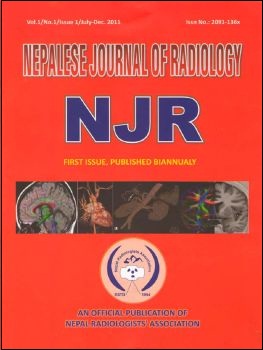Insights into the Connectivity of the Human Brain Using DTI
DOI:
https://doi.org/10.3126/njr.v1i1.6330Keywords:
Diffusion Tensor Imaging, human brain, white matter anatomyAbstract
Diffusion tensor imaging (DTI) is a neuroimaging MR technique, which allows in vivo and non-destructive visualization of myeloarchitectonics in the neural tissue and provides quantitative estimates of WM integrity by measuring molecular diffusion. It is based on the phenomenon of diffusion anisotropy in the nerve tissue, in that water molecules diffuse faster along the neural fibre direction and slower in the fibre-transverse direction. On the basis of their topographic location, trajectory, and areas that interconnect the various fibre systems of the mammalian brain are divided into commissural, projectional and association fibre systems. DTI has opened an entirely new window on the white matter anatomy with both clinical and scientific applications. Its utility is found in both the localization and the quantitative assessment of specific neuronal pathways. The potential of this technique to address connectivity in the human brain is not without a few methodological limitations. A wide spectrum of diffusion imaging paradigms and computational tractography algorithms has been explored in recent years, which established DTI as promising new avenue, for the non-invasive in vivo mapping of structural connectivity at the macroscale level. Further improvements in the spatial resolution of DTI may allow this technique to be applied in the near future for mapping connectivity also at the mesoscale level.
DOI: http://dx.doi.org/10.3126/njr.v1i1.6330
Nepalese Journal of Radiology Vol.1(1): 78-91
Downloads
Downloads
Published
How to Cite
Issue
Section
License
This license enables reusers to distribute, remix, adapt, and build upon the material in any medium or format, so long as attribution is given to the creator. The license allows for commercial use.




